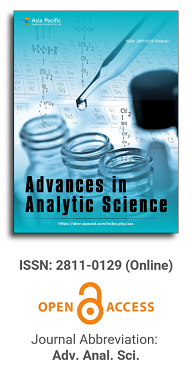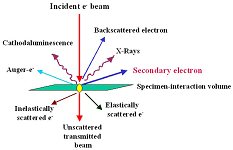
Asia Pacific Academy of Science Pte. Ltd. (APACSCI) specializes in international journal publishing. APACSCI adopts the open access publishing model and provides an important communication bridge for academic groups whose interest fields include engineering, technology, medicine, computer, mathematics, agriculture and forestry, and environment.

Development of a liquid fluorometric method for the quantification of Alkylresorcinols in whole wheat
Vol 4, Issue 1, 2023
Download PDF
Abstract
Objective: To assess the quality of whole wheat products, a method for determining alkylresorcinols (ARs)—markers of whole wheat, black wheat, and other cereal products—was developed. Methods: The study focused on wheat and black wheat, using factorial design to evaluate the impact of extraction solvents (acetone, alcohol, and ethyl acetate), extraction techniques (ultrasonic extraction for 30 or 60 minutes, and shaking overnight at room temperature), and sample forms (granules or flour) on AR determination. AR detection conditions were optimized by comparing chromatographic settings and fluorescence scanning wavelengths. The method's effectiveness was validated by measuring AR content in various commercially available cereals. Results: Considering reagent toxicity and efficiency, the optimal procedure involved ultrasonically extracting comminuted samples with ethanol for 30 minutes, then analyzing with a Waters CORTES-C18 column using an ethanol: acetonitrile (30:70, v:v) mobile phase. Fluorescence detection was performed at an excitation wavelength of 272 nm and an emission wavelength of 296 nm. The method had a linear range of 0.050–10.0 µg/mL with an R² ≥ 0.9999. Precision experiments showed an RSD of less than 5%, and spiked recovery rates ranged from 94.5% to 104%. The total AR content was 47.9–54.3 mg/100 g in commercially available wheat and 53.6–60.9 mg/100 g in black wheat. Conclusion: The liquid-fluorescence method established in this study effectively and rapidly separates ARs from wheat and black wheat, offering advantages of simplicity, high sensitivity, and accuracy.
Keywords
References
- Chinese Nutrition Society. Dietary guidelines for Chinese residents 2016 edition. Beijing: People’s Health Publishing House; 2016. pp. 15-25.
- Ross AB, Kamal-Eldin A, Åman P. Dietary Alkylresorcinols: Absorption, Bioactivities, and Possible Use as Biomarkers of Whole-grain Wheat- and Rye-rich Foods. Nutrition Reviews. 2004; 62(3): 81-95. doi: 10.1111/j.1753-4887.2004.tb00029.x
- State Grain Administration. Whole wheat Flour: LS/T 3244-2015. Standards Press of China; 2015.
- Wierzbicka R, Wu H, Franek M, et al. Determination of alkylresorcinols and their metabolites in biological samples by gas chromatography–mass spectrometry. Journal of Chromatography B. 2015; 1000: 120-129. doi: 10.1016/j.jchromb.2015.07.009
- Li L. Study on high performance liquid phase direct fluorescence detection of phenolic compounds in water [Marster’s theis]. Chengdu: Sichuan University; 2007.
- Ross AB, Åman P, Andersson R, et al. Chromatographic analysis of alkylresorcinols and their metabolites. Journal of Chromatography A. 2004; 1054(1-2): 157-164. doi: 10.1016/j.chroma.2004.04.020
- Wang L, Tan B, Liu M, et al. Content of alkyl resorcinol in Chinese wheat. Study on composition characteristics and processing and storage stability. In: Proceedings of the Beijing: the 14th international grain technology and bread conference, the international oil and grease Technology Development Forum; 2012. pp. 261-262.
- Ross AB, Svelander C, Karlsson G, et al. Identification and quantification of even and odd chained 5-n alkylresorcinols, branched chain-alkylresorcinols and methylalkylresorcinols in Quinoa (Chenopodium quinoa). Food Chemistry. 2017; 220: 344-351. doi: 10.1016/j.foodchem.2016.10.020
Supporting Agencies
Copyright (c) 2023 Yufei Wang, Xuesong Zhang, Xuesong Xiang, Chao Gao, Zhu Wang

This work is licensed under a Creative Commons Attribution 4.0 International License.

This site is licensed under a Creative Commons Attribution 4.0 International License (CC BY 4.0).
1.jpg)
Prof. Sivanesan Subramanian
Anna University, India





.jpg)
